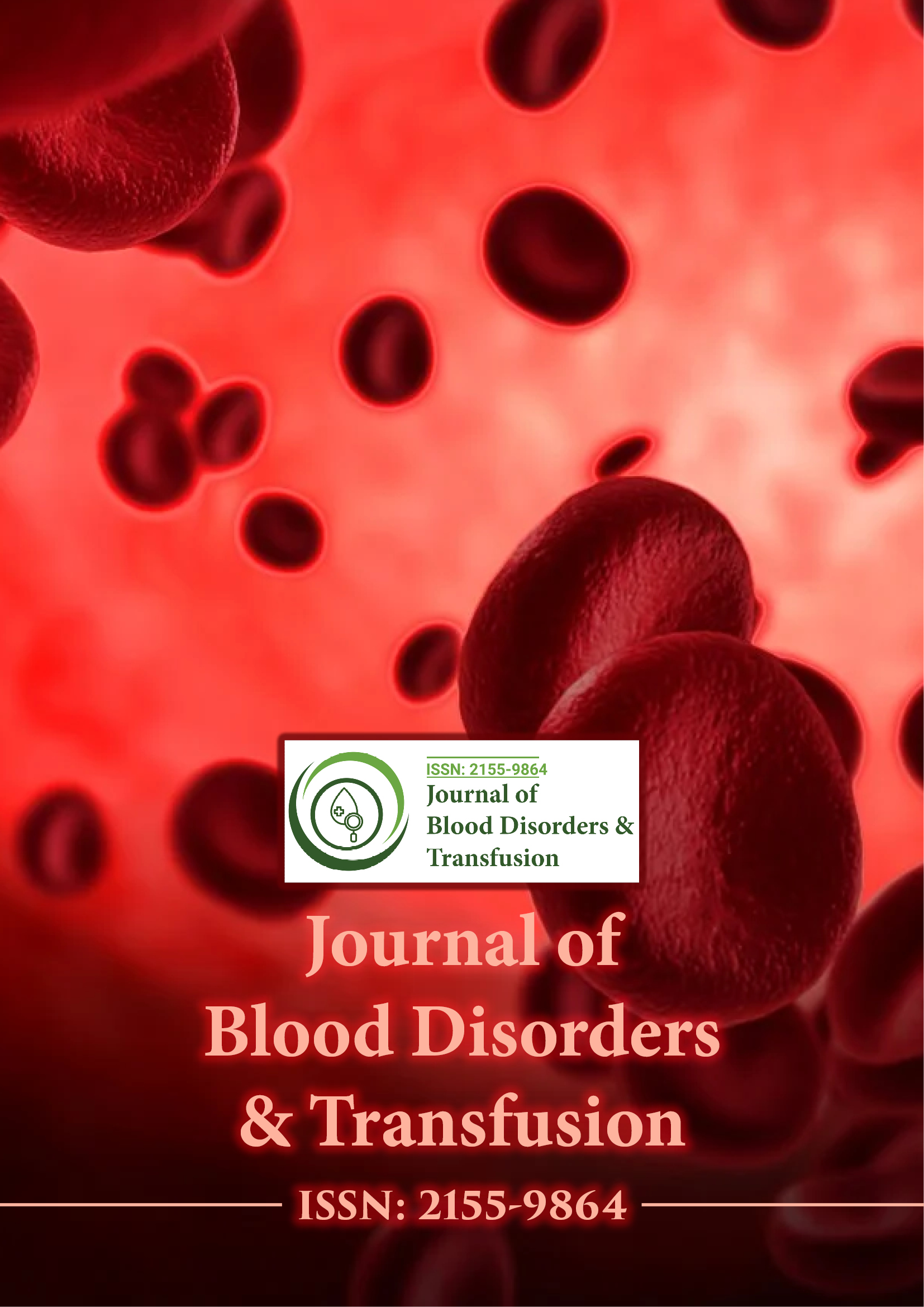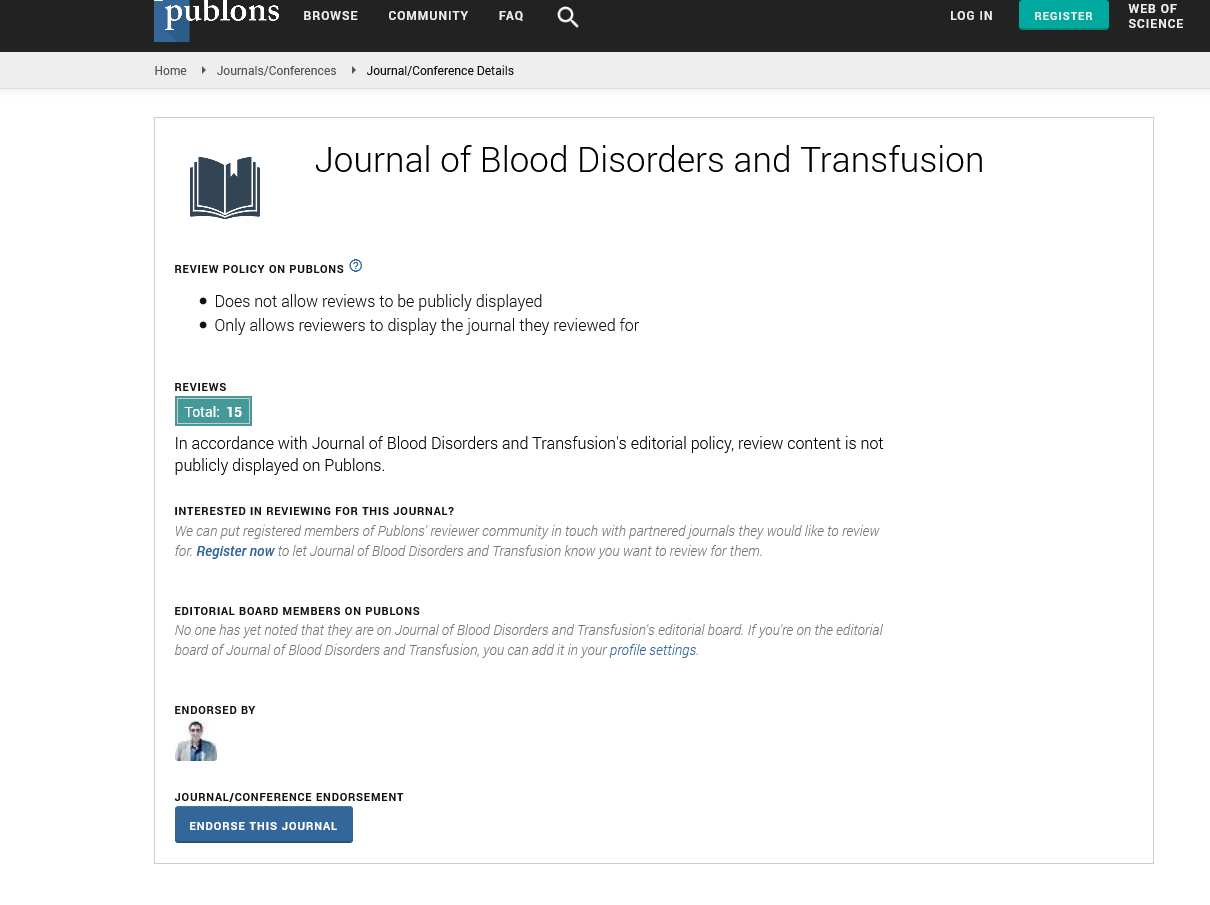Indexed In
- Open J Gate
- Genamics JournalSeek
- JournalTOCs
- Ulrich's Periodicals Directory
- RefSeek
- Hamdard University
- EBSCO A-Z
- OCLC- WorldCat
- Proquest Summons
- Publons
- Geneva Foundation for Medical Education and Research
- Euro Pub
- Google Scholar
Useful Links
Share This Page
Journal Flyer

Open Access Journals
- Agri and Aquaculture
- Biochemistry
- Bioinformatics & Systems Biology
- Business & Management
- Chemistry
- Clinical Sciences
- Engineering
- Food & Nutrition
- General Science
- Genetics & Molecular Biology
- Immunology & Microbiology
- Medical Sciences
- Neuroscience & Psychology
- Nursing & Health Care
- Pharmaceutical Sciences
Journal Highlights
- Anemia Studies
- Antiphospholide Antibody Syndrome
- Autoimmune Disorder
- Autoimmune Haemolytic Anaemia
- Blood Banking
- Blood Cancer
- Blood Group
- Blood Lymphocytes
- Blood Transfusion Techniques
- Coagulation
- Eosinophilia
- Genetic Blood Disorders
- Haemolytic Anaemia
- Haemolytic Disease of the Newborn
- Haemostasis
- Hemato-oncology
- Hematology
- Innovative Treatments of Blood
- Juvenile Myelomonocytic Leukaemia
- Leukopenia
- Lymphocytosis
- Neutropenia
- Neutrophilic Leukocytosis
- Pediatric hematology
- Plasma
- Plasma Cell Disorder
- Platelet disorders
- Red Blood Cells
- Sickle Cell Disease
- Systematic Lupus Erythematous
- Thrombocytopenia Purpura
- Transfusion Medicine
- White Blood Cell
Platelet disorders
Platelet disorders are conditions that affect the number or function of platelets, which are crucial for blood clotting and wound healing. These disorders can lead to either excessive bleeding or abnormal clotting, posing significant health risks.
Thrombocytopenia, or low platelet count, can result from various causes, including bone marrow disorders, autoimmune diseases, or infections. This condition can lead to easy bruising, prolonged bleeding from cuts, and, in severe cases, spontaneous bleeding. Immune thrombocytopenic purpura (ITP) is a common autoimmune disorder where the immune system mistakenly destroys platelets.
Conversely, thrombocytosis is characterized by an elevated platelet count, which can increase the risk of abnormal clotting, leading to complications such as deep vein thrombosis or stroke. This condition may be primary, due to bone marrow disorders like essential thrombocythemia, or secondary to other diseases or inflammation.
Platelet dysfunction disorders, such as Bernard-Soulier syndrome and Glanzmann thrombasthenia, involve abnormalities in platelet function rather than count. These genetic disorders impair platelet aggregation and clot formation, leading to bleeding issues despite normal platelet counts.
Management of platelet disorders often involves addressing the underlying cause, medications to regulate platelet production or function, and sometimes platelet transfusions or therapies like splenectomy. Advances in diagnostics and treatments continue to improve the management of these complex conditions, enhancing patient outcomes and quality of life.

